Storks are large birds that can be found in many regions around the world. They are most commonly associated with long legs, large wings, and a long beak.
There are 19 species of storks, each with its own unique characteristics. These species can differ in size, color, diet, and behavior. These birds are known for their graceful flight and loud calls, which can be heard from miles away.
Storks are also known for their impressive migratory patterns, which can take them from one part of the globe to another.
This article will provide an overview of the different species of storks, their behaviors, and their adaptations.
1. White Stork
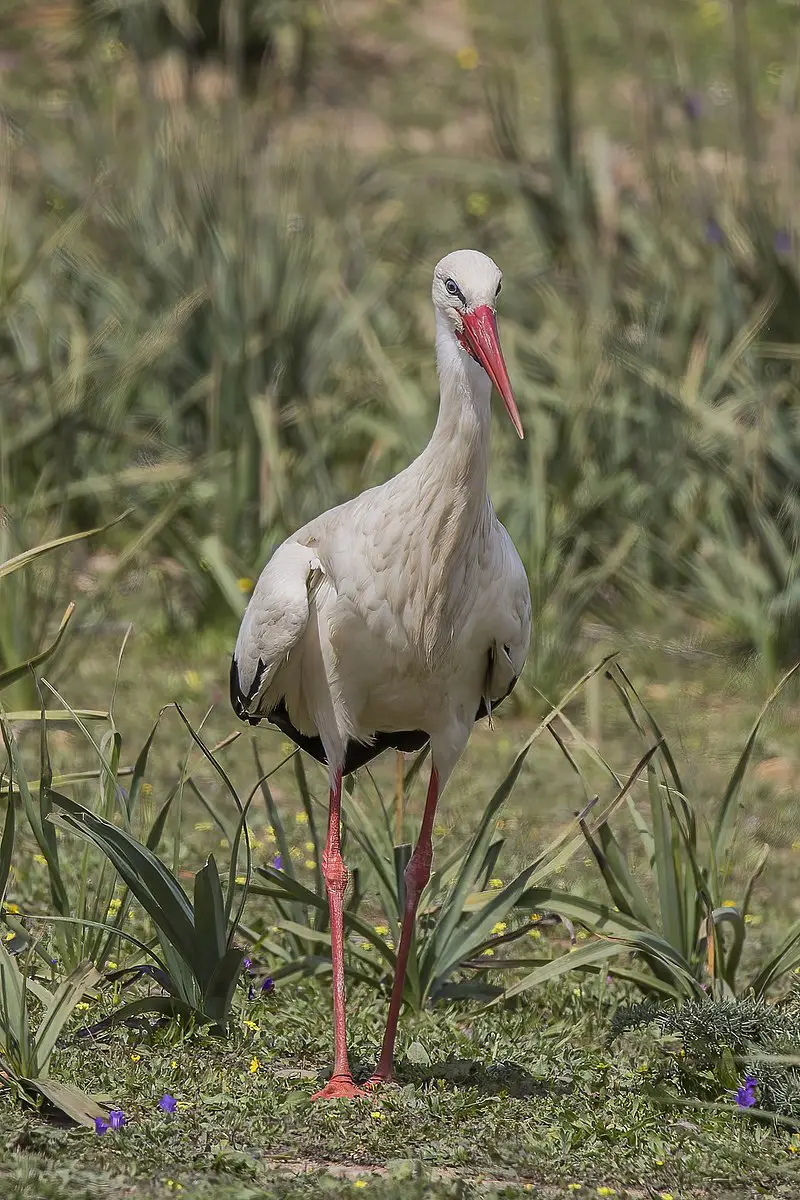
The White Stork is a majestic bird found in Europe, with white plumage and black wings. It has long slender legs and beaks that are usually bright red in color.
The average adult stands around 100 – 115 cm tall from beak to tail tip, while its wing span can reach up to 155-215 cm wide. There are two subspecies of the White Stork which differ slightly by size.
They feed on small animals such as frogs, fish or insects and nest near human dwellings due to the abundance of food available there; they also build nests atop chimneys or roofs when given the chance.
These birds have been revered for centuries as symbols of fertility because their return each spring often coincides with an increase in births among humans living nearby – something superstitious people take great note of.
Scientific classification:
| Kingdom | Animalia |
| Phylum | Chordata |
| Class | Aves |
| Order | Ciconiiformes |
| Family | Ciconiidae |
| Genus | Ciconia |
| Species | C. ciconia |
2. Wood Stork
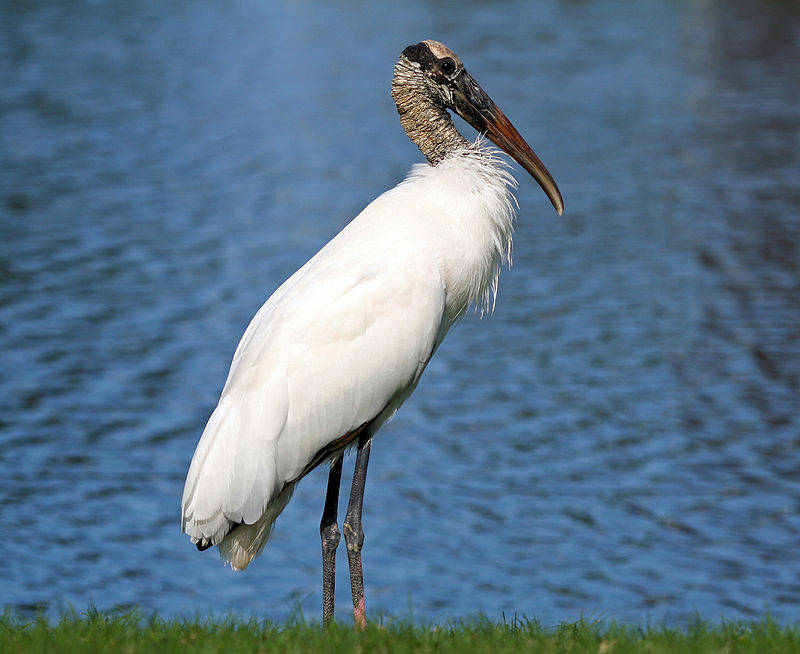
The Wood Stork is a large wading bird found in subtropical and tropical habitats throughout the Americas, including the Caribbean. It stands out from other storks due to its distinctive white head and neck feathers.
The wood stork has an impressive wingspan of up to 6 feet wide, making it one of the largest birds in North America.
Although usually seen near water sources such as swamps or wetlands looking for food like fish, crabs, frogs and even small reptiles they can sometimes be spotted far away from their natural habitat during migration season.
This species is also one of few that breeds annually in North America with nests typically built on platforms made by humans or animals near water bodies or ponds.
Scientific classification:
| Kingdom | Animalia |
| Phylum | Chordata |
| Class | Aves |
| Order | Ciconiiformes |
| Family | Ciconiidae |
| Genus | Mycteria |
| Species | M. americana |
3. Black Stork
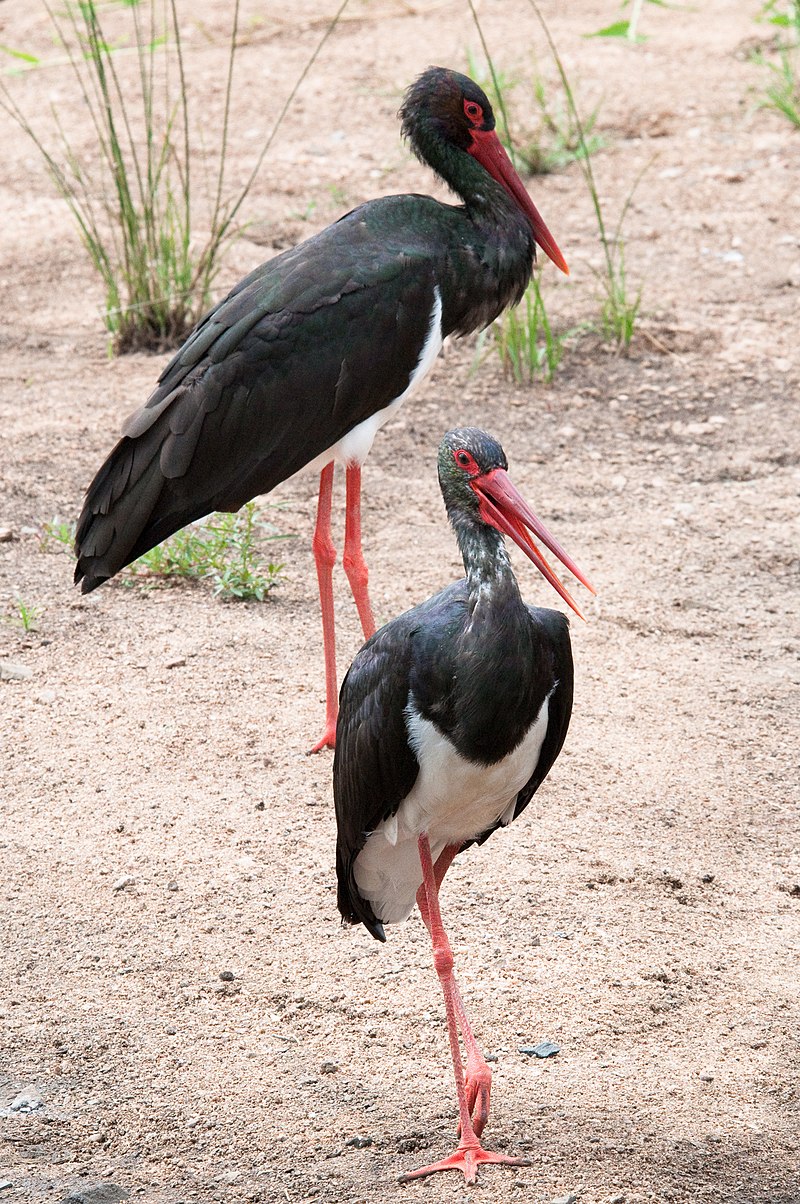
The Black Stork is a majestic bird, with its glossy black feathers and long red legs. Its wingspan ranges from 57 to 61 inches, while it measures an average of 37 to 39 inches tall from beak tip to tail end.
The white underparts contrast perfectly against the dark plumage and are complimented by the vivid red beak.
First described in 1758 by Carl Linnaeus in his “Systema Naturae”, this species has since become popular among bird watchers and naturalists alike for its beauty and gracefulness when flying through the sky.
Scientific classification:
| Kingdom | Animalia |
| Phylum | Chordata |
| Class | Aves |
| Order | Ciconiiformes |
| Family | Ciconiidae |
| Genus | Ciconia |
| Species | C. nigra |
4. Marabou Stork
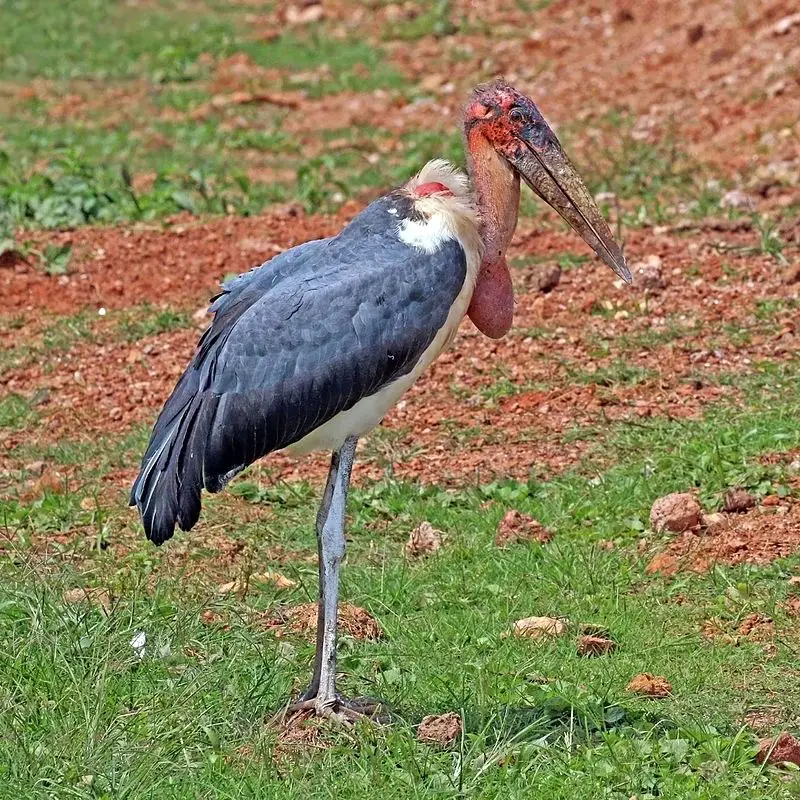
The marabou stork is a large wading bird native to sub-Saharan Africa. It has an unmistakable appearance, with cloak-like wings and back, skinny white legs and sometimes a large mass of “hair”.
They reside in both wet and arid habitats near human habitation, often found at landfill sites.
This species has earned the nickname ‘undertaker bird’ due to its unique shape viewed from behind.
Despite living alongside humans they remain elusive birds who rarely interact with us but can still be seen gliding on thermals or standing majestically by lakesides.
The marabou stork is truly an impressive sight that will stay in your memory forever.
Scientific classification:
| Kingdom | Animalia |
| Phylum | Chordata |
| Class | Aves |
| Order | Ciconiiformes |
| Family | Ciconiidae |
| Genus | Leptoptilos |
| Species | L. crumenifer |
5. Black-Necked Stork
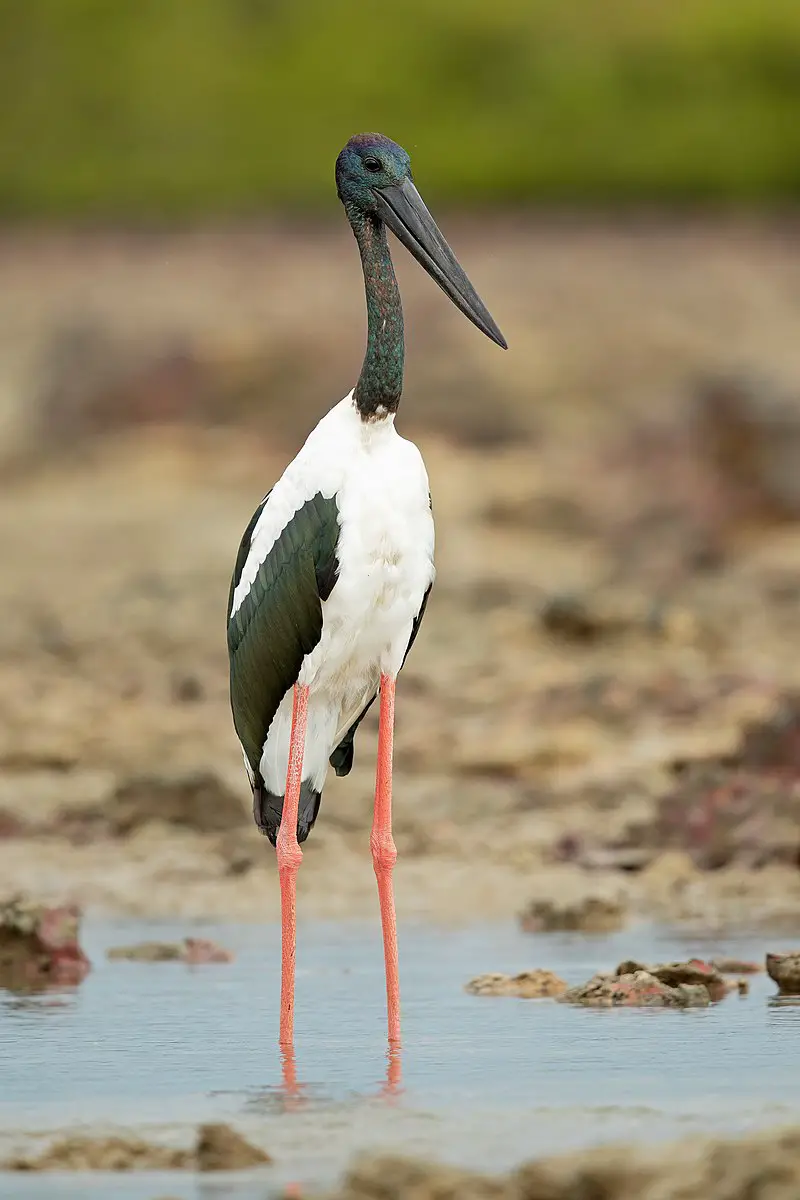
The black-necked stork is a magnificent wading bird in the stork family. With its long neck, striking colours and impressive size, this species is easily recognized across much of India and Southeast Asia as well as Australia.
This adaptable bird can be found in wetlands such as marshes, lagoons and rivers but also frequents nearby crop fields where it feeds on a variety of animal prey including amphibians, fish and small reptiles.
Both sexes have an imposing bill which they use to catch food or perform intricate courtship rituals during breeding season that involve bowing their heads low then jerking them back up again several times.
Their feathers are predominantly dark grey with white patches under the wings while the head has glossy greenish-black plumage; making for stunningly beautiful creatures indeed.
Scientific classification:
| Kingdom | Animalia |
| Phylum | Chordata |
| Class | Aves |
| Order | Ciconiiformes |
| Family | Ciconiidae |
| Genus | Ephippiorhynchus |
| Species | E. asiaticus |
Also Featured In: Birds that Charles Darwin Studied, Birds that Found in Kakadu National Park
6. Yellow-Billed Stork
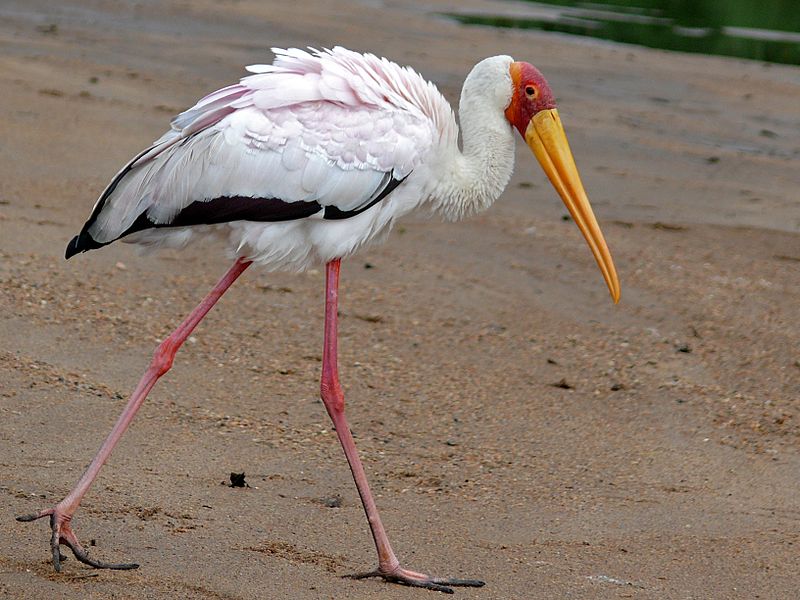
The yellow-billed stork is a large wading bird found in Africa south of the Sahara as well as Madagascar.
It belongs to the family Ciconiidae and has three other species in its genus – Mycteria americana, Mycteria cinerea and Leptoptilos javanicus.
This majestic bird stands at an average height of up to 1 meter with a wingspan that can reach 2 meters wide.
Its plumage is predominantly white with black flight feathers that contrast against its bright yellow bill for which it is named after.
The Yellow-billed Stork feeds on fish, frogs, insects and small reptiles like snakes by probing deep into mud or shallow water bodies using its long beak.
These captivating birds are also known to form colonies during their nesting season from August until October where they build nests out of sticks atop tall trees near wetlands or riversides.
Scientific classification:
| Kingdom | Animalia |
| Phylum | Chordata |
| Class | Aves |
| Order | Ciconiiformes |
| Family | Ciconiidae |
| Genus | Mycteria |
| Species | M. ibis |
7. Painted Stork
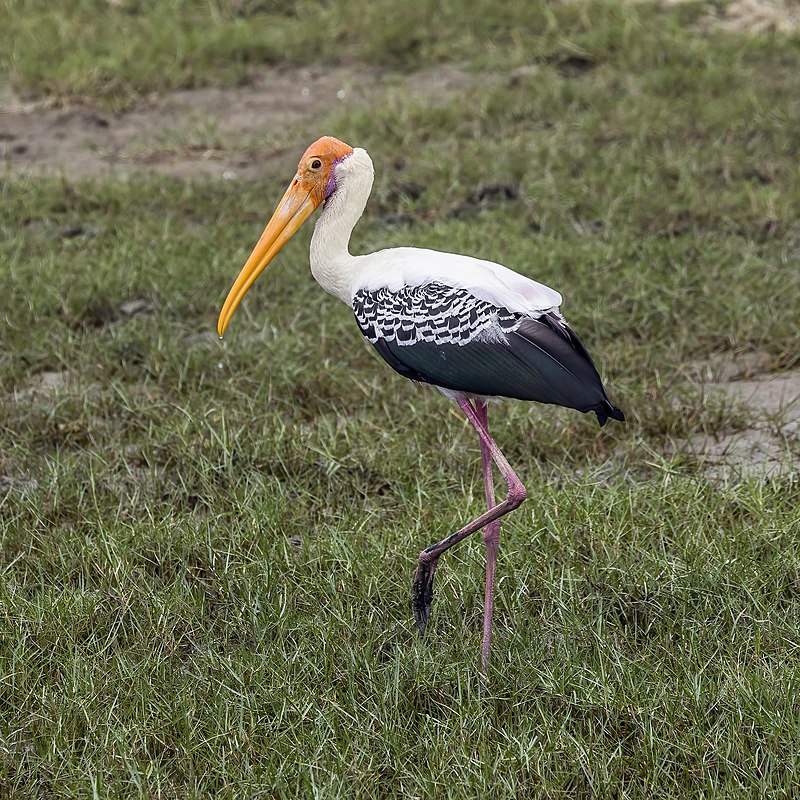
The Painted Stork is a large bird that belongs to the stork family. It has an impressive wingspan and can be found in tropical Asia, ranging from the Indian subcontinent all the way to Southeast Asia.
These birds are unique because of their pink tertial feathers, which gives them their name. They form flocks when they forage in shallow waters near rivers or lakes.
They dip their half-open beaks into water looking for food such as fish, frogs and other small aquatic creatures.
A distinctive feature of these birds is that during breeding season both males and females have red eyes with yellow rings around them.
This species also displays amazing cooperative behaviour when nesting; young storks help build nests by bringing material back to older ones who weave it together forming huge colonies on trees close to wetlands.
Scientific classification:
| Kingdom | Animalia |
| Phylum | Chordata |
| Class | Aves |
| Order | Ciconiiformes |
| Family | Ciconiidae |
| Genus | Mycteria |
| Species | M. leucocephala |
8. Milky Stork
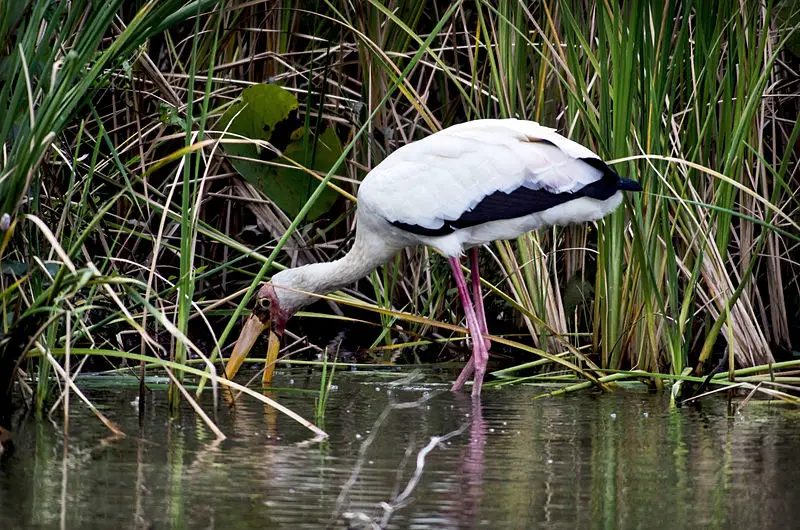
The Milky Stork is a large, white bird found in coastal mangroves of Southeast Asia. Native to Cambodia, Vietnam, Malaysia and Indonesia it has an impressive wingspan between 43-55 cm with a body length that can reach up to 97cm.
The species was once part of the Ibis genus but recently reclassified into its own Mycteria genus due to similarities with other storks like Black necked or Woolly Necked Storks.
It feeds primarily on fish by wading through shallow waters – thrusting its head underwater for prey then rising again for air as needed.
They are social birds often seen congregating together along the coasts during breeding season where they construct nests high above ground from sticks and twigs lined with mud and leaves inside tree hollows or tall grasses near water sources such as rivers or swamps.
Scientific classification:
| Kingdom | Animalia |
| Phylum | Chordata |
| Class | Aves |
| Order | Ciconiiformes |
| Family | Ciconiidae |
| Genus | Mycteria |
| Species | M. cinerea |
9. Asian Openbill
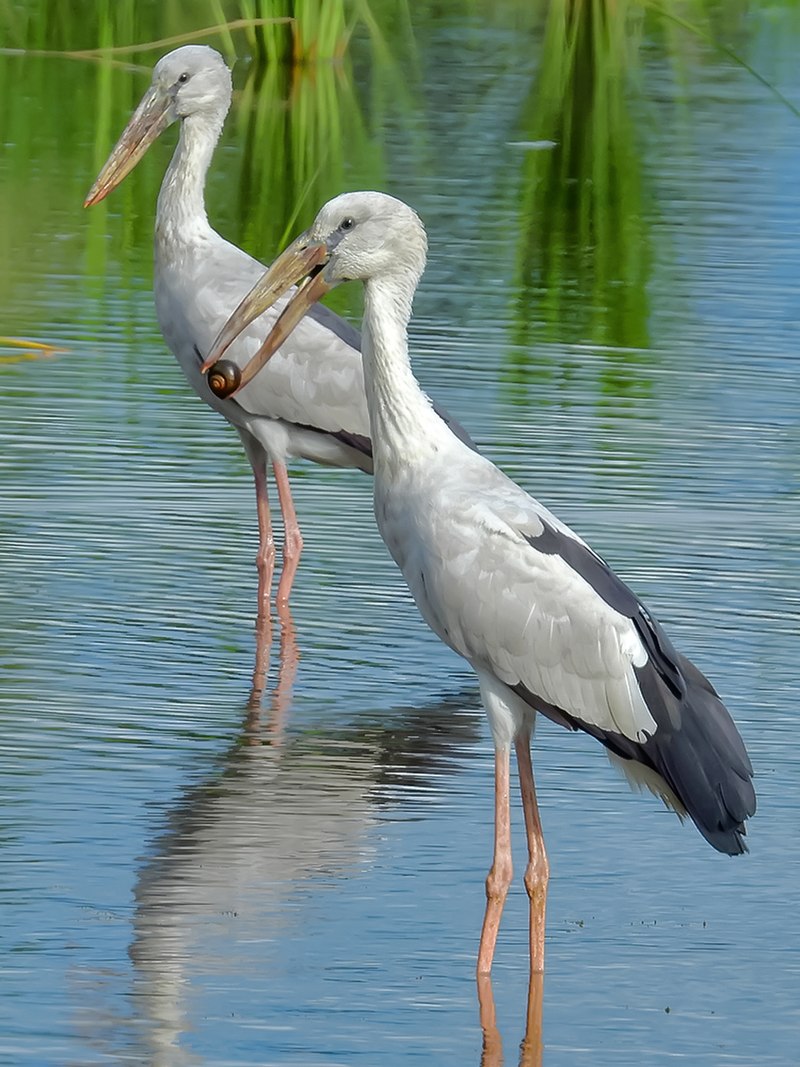
The Asian openbill is a large stork found in the Indian subcontinent and Southeast Asia. It has a greyish or white body, glossy black wings and tail, with an adult having a gap between upper mandible and lower one.
Juveniles don’t have this unique feature but will grow it as they mature.
They feed by wading through shallow water looking for snails, crustaceans and aquatic plants to eat from the surface of mudflats or marshes.
Due to its enormous size (up to 121 cm tall) it makes quite an impressive sight when flying.
Scientific classification:
| Kingdom | Animalia |
| Phylum | Chordata |
| Class | Aves |
| Order | Ciconiiformes |
| Family | Ciconiidae |
| Genus | Anastomus |
| Species | A. oscitans |
10. Greater Adjutant
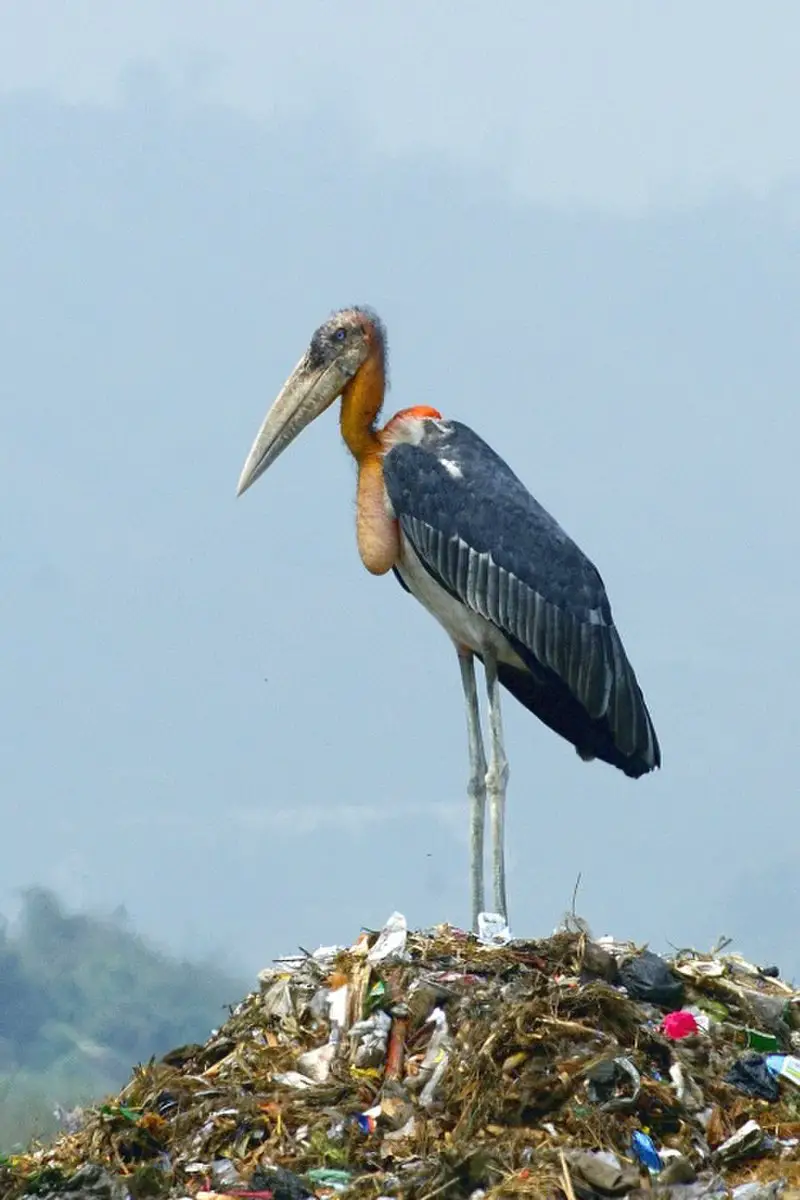
The Greater Adjutant is a majestic member of the stork family, Ciconiidae. It was once found in wide regions across southern and mainland Southeast Asia but now only three breeding populations remain – two in India with the largest colony being located in Assam and another smaller one on an island off Myanmar.
The bird has blackish-grey plumage which stands out against its white shoulder patches giving it a distinctive appearance.
Its large bill gives it an impressive look befitting its size as this species can reach up to 1 metre tall.
Despite their formidable presence, these birds are highly vulnerable due to their small population numbers making them critically endangered.
Conservation efforts such as habitat protection must continue if we are to ensure that future generations will get to admire this beautiful bird for many years yet to come.
Scientific classification:
| Kingdom | Animalia |
| Phylum | Chordata |
| Class | Aves |
| Order | Ciconiiformes |
| Family | Ciconiidae |
| Genus | Leptoptilos |
| Species | L. dubius |
11. Jabiru
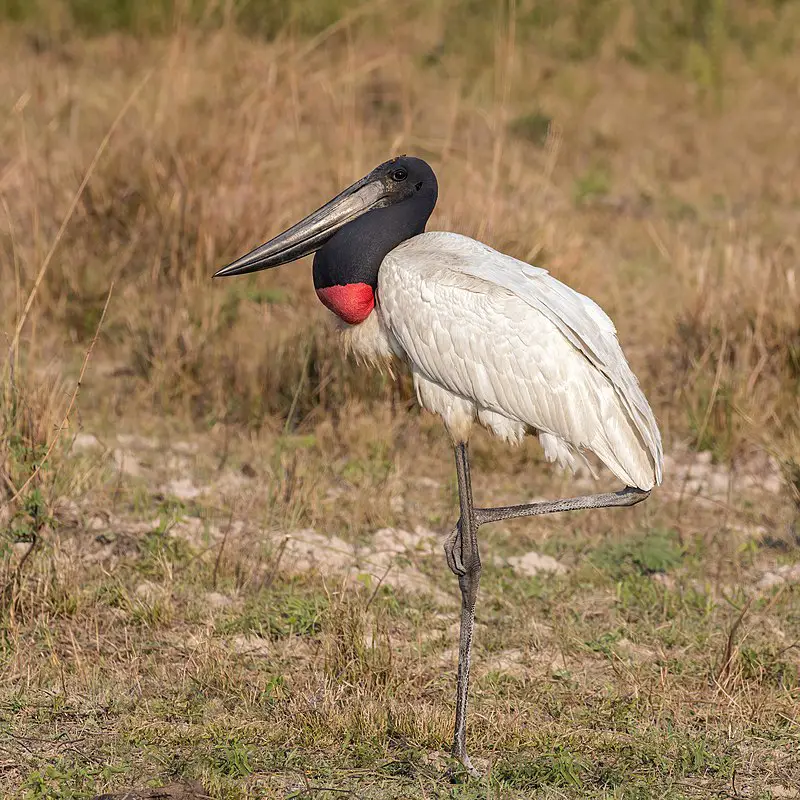
Jabiru is a large stork found in the Americas from Mexico to Argentina. It has been known to wander into the United States, though it is most common in Brazil and Paraguay’s Pantanal region and Eastern Chaco.
Standing at four feet tall with its iconic white neck, this beautiful bird can be seen wading through shallow wetlands looking for fish or small rodents that make up its diet.
Jabirus also fly high above their habitats searching for carrion which they will then consume on the spot or carry back to feed their young who are usually situated near riverside trees.
This species of bird stands out due to its unique black-and-white plumage as well as its long legs and bill which help them search for food more effectively during wetland explorations.
Scientific classification:
| Kingdom | Animalia |
| Phylum | Chordata |
| Class | Aves |
| Order | Ciconiiformes |
| Family | Ciconiidae |
| Genus | Jabiru Hellmayr, 1906 |
| Species | J. mycteria |
12. Saddle-Billed Stork
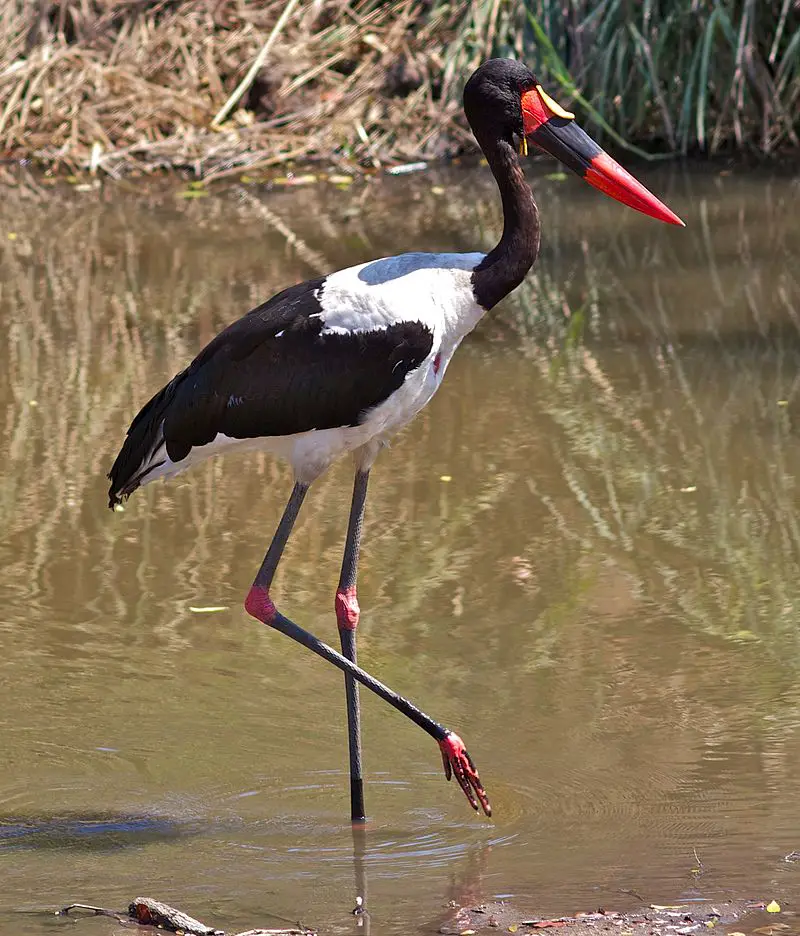
The Saddle-billed Stork is a large wading bird from the stork family, Ciconiidae. It can be found in sub-Saharan Africa and some parts of western Africa.
This majestic bird stands out with its striking features – it has an impressive bill that looks like a saddle and bright red legs which contrast against its white plumage on top.
The Saddle-billed Stork’s diet consists mostly of fish, frogs, aquatic invertebrates as well as small reptiles or mammals they come across while scavenging for food in wetland areas.
Sadly, this species is considered endangered in South Africa due to habitat loss and degradation caused by human activities such as drainage projects and agricultural expansion.
We must take action to protect these beautiful creatures before their numbers decrease further.
Scientific classification:
| Kingdom | Animalia |
| Phylum | Chordata |
| Class | Aves |
| Order | Ciconiiformes |
| Family | Ciconiidae |
| Genus | Ephippiorhynchus |
| Species | E. senegalensis |
13. Abdim’s Stork
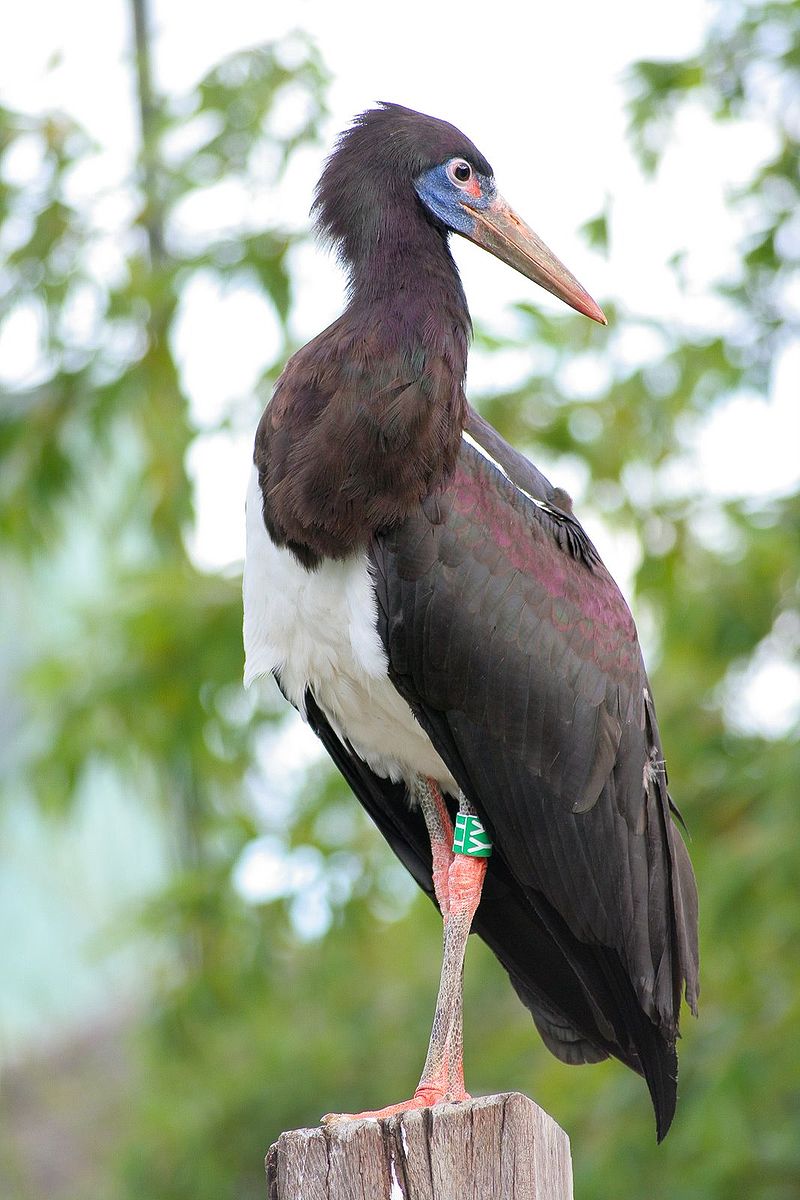
Abdim’s stork is a small species of white-bellied bird belonging to the family Ciconiidae. It can be found in many open habitats throughout Sub-Saharan Africa and Yemen, primarily feeding on insects.
The name Abdim’s Stork commemorates the Turkish Governor of Wadi Halfa in Sudan, Bey El-Arnaut Abdim (1780–1827).
This beautiful bird has striking black plumage with contrasting white underparts and red facial wattles.
Its long legs are pinkish grey while its bill is yellowish green at the base but quickly darkens towards its tip. A distinctive feature of this species is their very short tails compared to other storks from similar regions.
They have even been seen flapping their wings rapidly as if hovering above water sources for food or simply enjoying flight.
Scientific classification:
| Kingdom | Animalia |
| Phylum | Chordata |
| Class | Aves |
| Order | Ciconiiformes |
| Family | Ciconiidae |
| Genus | Ciconia |
| Species | C. abdimii |
14. Oriental Stork
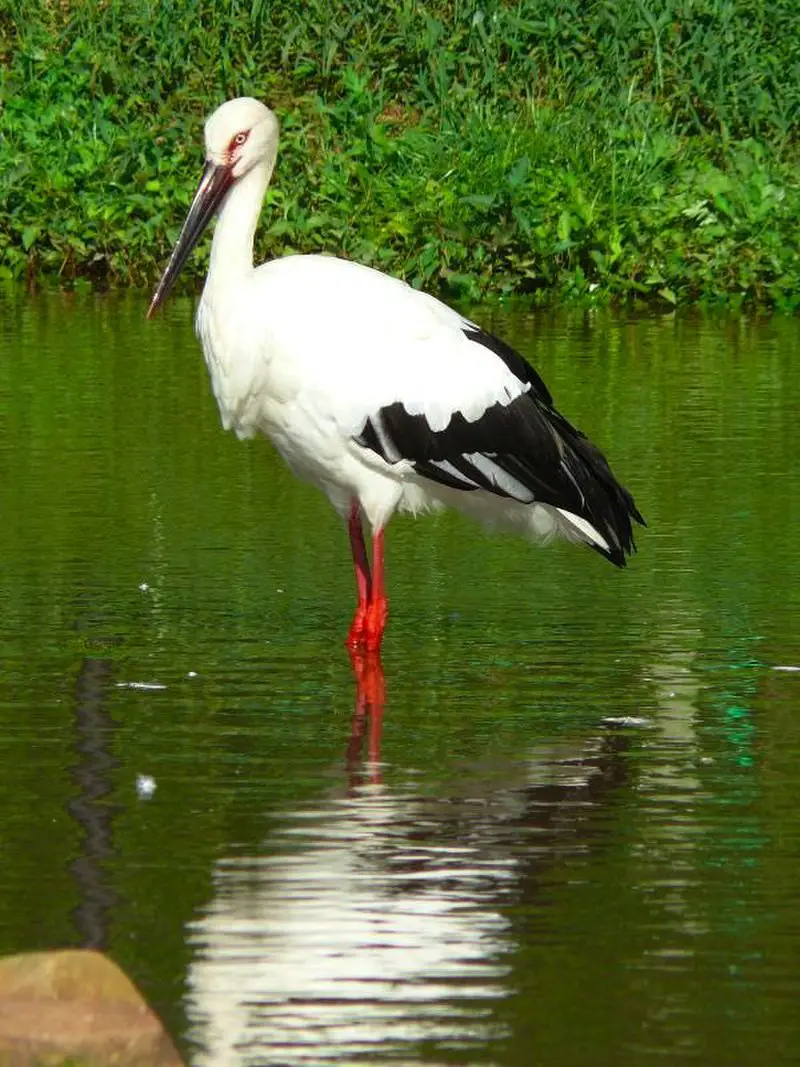
The Oriental stork is a majestic bird belonging to the family Ciconiidae. It has white plumage and black wing feathers, making it easily distinguishable from other species of birds.
With an average size of 100-129 cm, they are bigger than their European White Stork cousins. Found in Japan and Korea primarily, the first sighting was reported by Robert Swinhoe in 1873.
They inhabit wetland ecosystems such as riverbanks or marshes where they feed on fish, amphibians and reptiles which makes them effective pest controllers for farmers.
Despite being listed as endangered due to habitat loss & illegal hunting practices, conservation efforts have helped populations increase significantly over recent years – allowing us all to enjoy these beautiful creatures.
Scientific classification:
| Kingdom | Animalia |
| Phylum | Chordata |
| Class | Aves |
| Order | Ciconiiformes |
| Family | Ciconiidae |
| Genus | Ciconia |
| Species | C. boyciana |
15. Maguari Stork
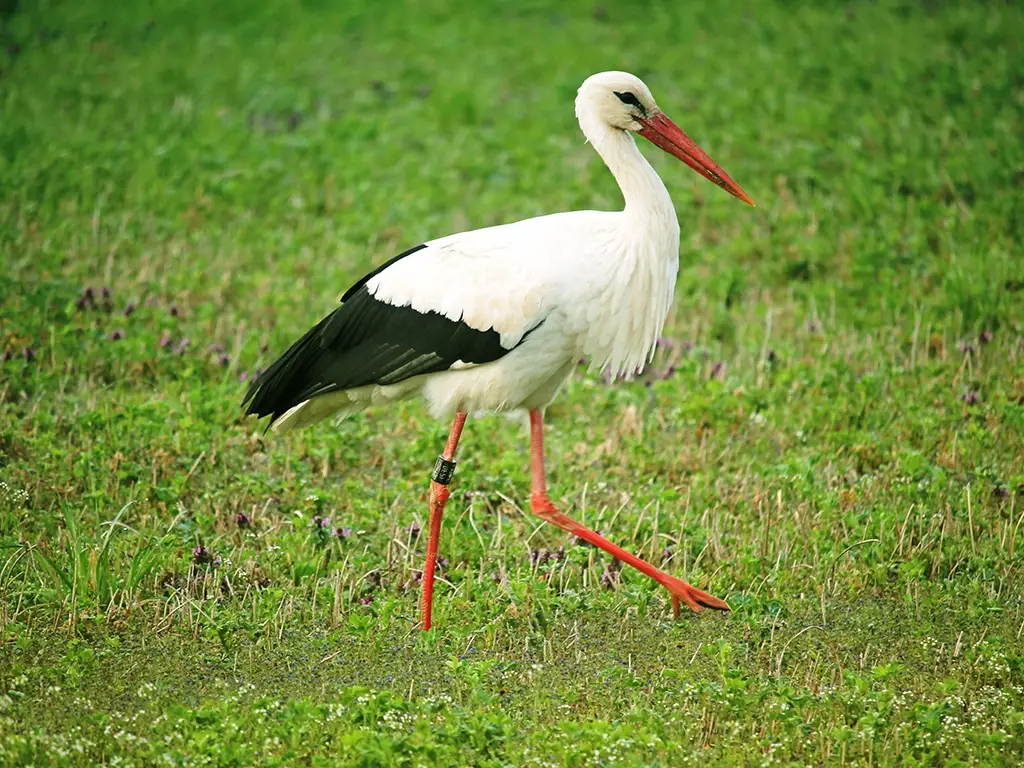
The Maguari stork is a large species of stork found in South America. It has similar features to the white stork, but it is slightly larger.
This bird can be identified by its black body with white patches on its wings and tail feathers and yellow legs which contrast against its dark feathers.
The maguari feeds mainly on fish, amphibians, reptiles, crustaceans and insects; they will also scavenge for food when necessary.
These birds breed during wetland seasons where their nests are made up of sticks or reeds built high above the ground in trees near water bodies such as rivers or swamps.
Their populations have been decreasing due to habitat loss from human activities such as agricultural expansion or deforestation however conservation efforts are being put into place to help protect this unique species so that we may continue enjoy watching these magnificent birds soar through our skies.
Scientific classification:
| Kingdom | Animalia |
| Phylum | Chordata |
| Class | Aves |
| Order | Ciconiiformes |
| Family | Ciconiidae |
| Genus | Ciconia |
| Species | C. maguari |
16. Lesser Adjutant
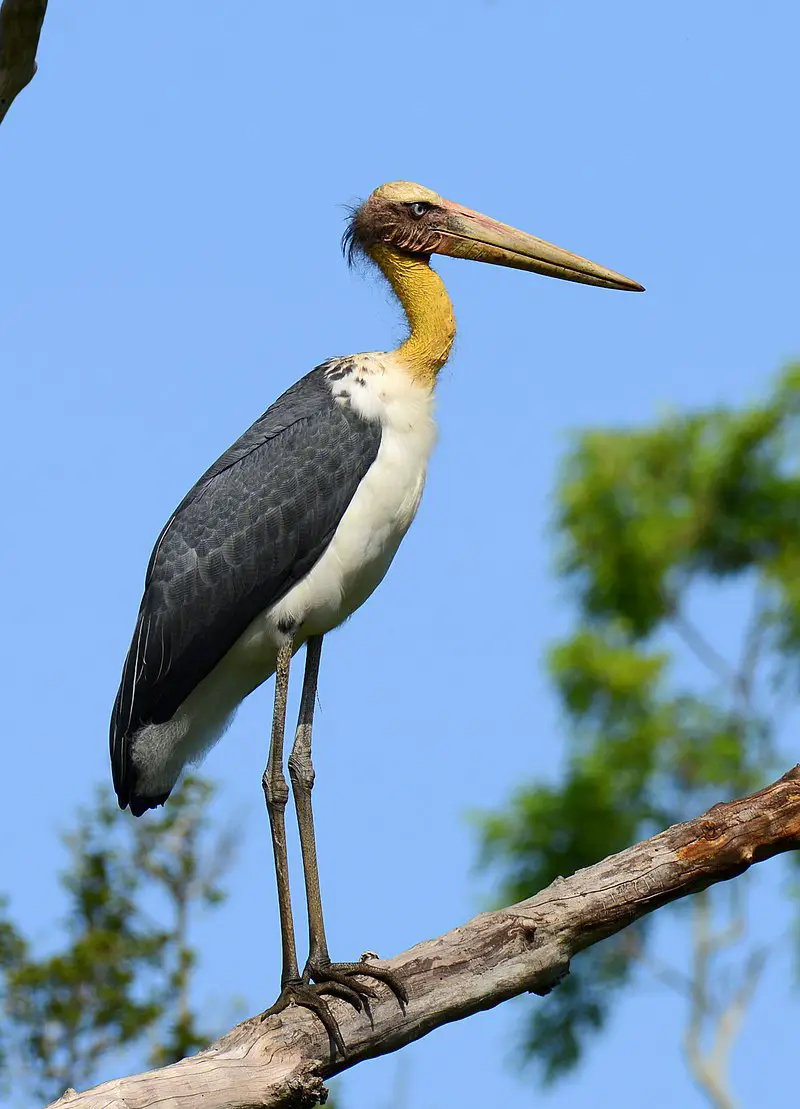
The Lesser Adjutant is a large wading bird found in the stork family Ciconiidae. It has an unmistakable profile, with its bare neck and head distinguishing it from other species of its genus.
This impressive bird is solitary in nature, preferring to live near wetland habitats where it can feed on fish, frogs and insects that inhabit these areas.
The Lesser Adjutant lives all over India as well as Southeast Asia into Java making them a widespread species.
They are also less likely scavengers than their larger counterpart –the Greater Adjutant Bird -making them more unique amongst their peers.
Not only do they possess this interesting trait but due to their size and ability to fly long distances they play an important role within local ecosystems across Asia keeping things balanced and healthy for future generations.
Scientific classification:
| Kingdom | Animalia |
| Phylum | Chordata |
| Class | Aves |
| Order | Ciconiiformes |
| Family | Ciconiidae |
| Genus | Leptoptilos |
| Species | L. javanicus |
17. Shoebill
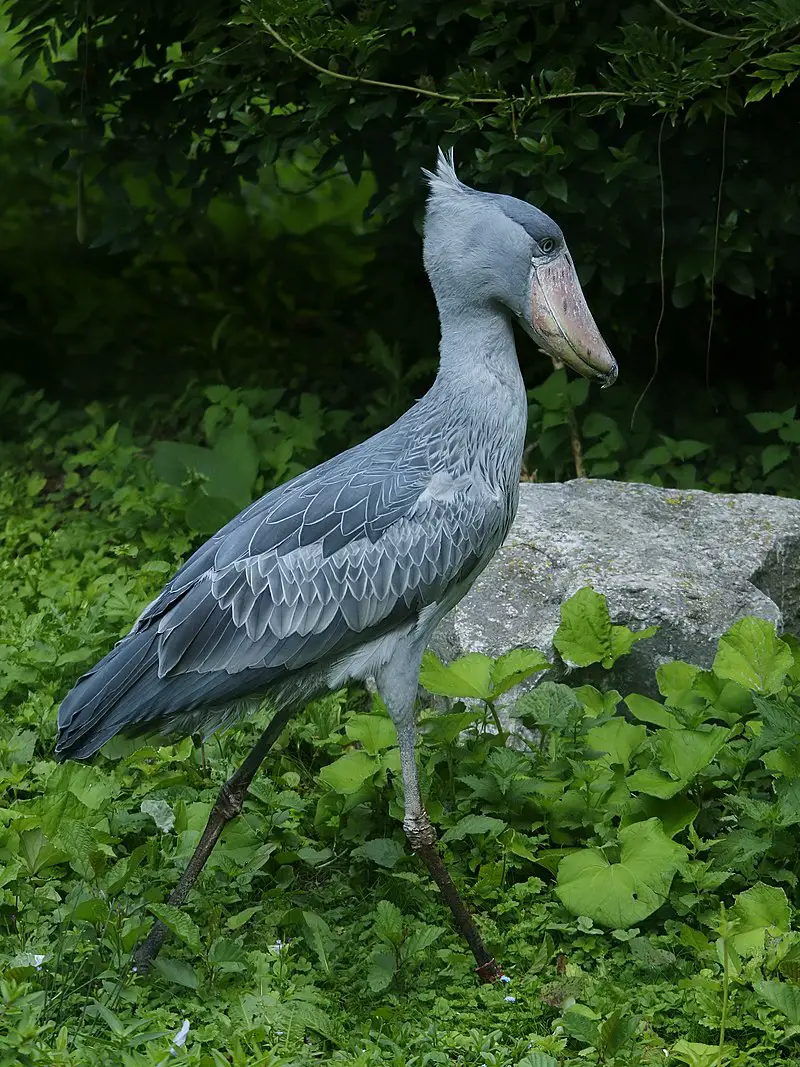
The Shoebill is a large wading bird that stands out for its striking shoe-shaped bill. It has long legs and an overall stork-like form, leading to it previously being grouped with the Ciconiiformes order of birds.
However, genetic evidence suggests instead grouping it alongside pelicans and herons in the Ardeidae family.
These majestic creatures are found across much of East Africa, particularly swampy areas such as papyrus swamps or lagoons.
They feed mainly on fish but will also consume frogs, crustaceans and small mammals when available.
The Shoebill is listed as Vulnerable by conservationists due to threats from human disturbance including drainage of wetlands needed for nesting sites as well as hunting pressure throughout their range.
Scientific classification:
| Kingdom | Animalia |
| Phylum | Chordata |
| Class | Aves |
| Order | Pelecaniformes |
| Family | Balaenicipitidae |
| Genus | Balaeniceps Gould, 1850 |
| Species | B. rex |
18. Storm’s Stork
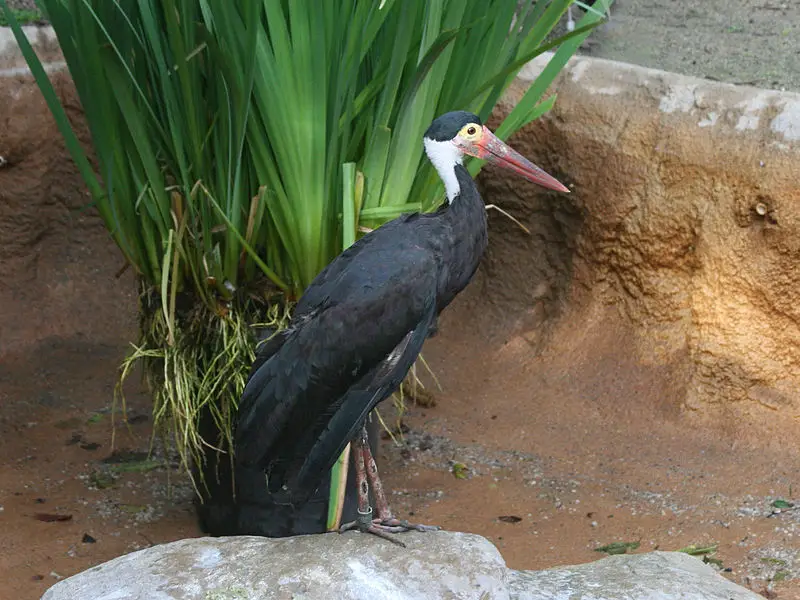
Storm’s stork is a rare species of bird found in the lowland tropical forests of Indonesia, Malaysia and Thailand. It has an estimated population size of fewer than 500 individuals worldwide.
The primary cause for its decline is believed to be deforestation in their natural habitat leading to destruction or degradation of suitable nesting sites.
Hunting by humans also impacts the numbers as does competition for food with other animals such as pigs, primates and cattle which are present in some areas where Storm’s Storks live.
Conservation efforts have been ongoing since 2000 and involve nest protection schemes, public education campaigns and research into the birds’ behaviour & ecology but much more needs to be done if this beautiful yet vulnerable species is going to survive long-term.
Scientific classification:
| Kingdom | Animalia |
| Phylum | Chordata |
| Class | Aves |
| Order | Ciconiiformes |
| Family | Ciconiidae |
| Genus | Ciconia |
| Species | C. stormi |
Also Featured In: Birds that Found in Sumatra,
19. African Openbill
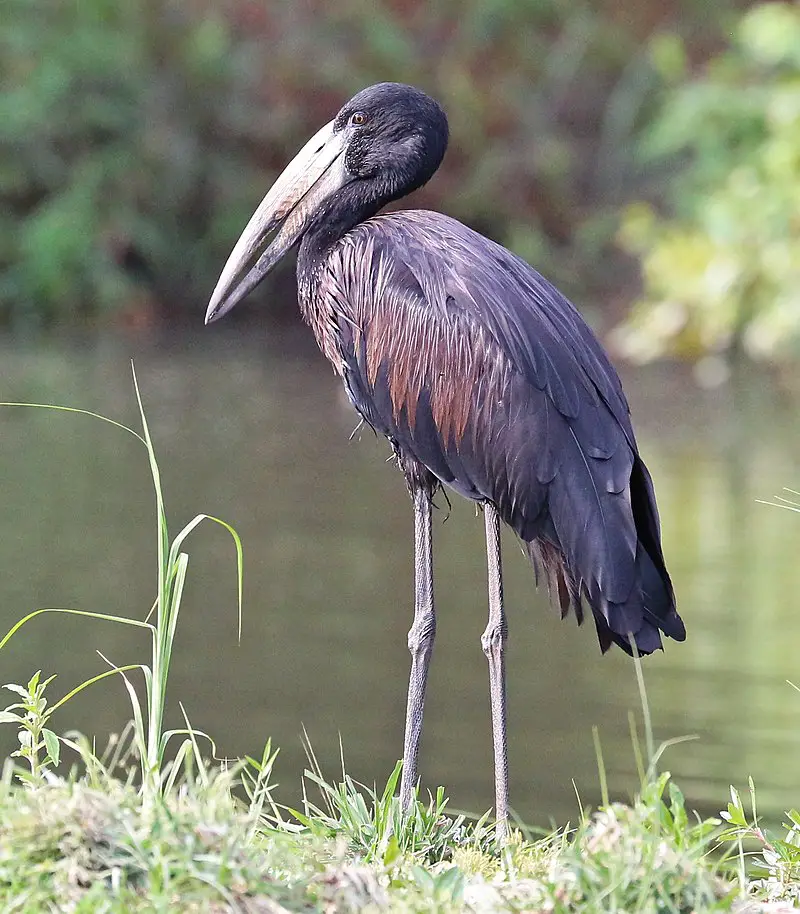
The African openbill is a species of stork found in Sub-Saharan Africa and western Madagascar.
It has a patchy distribution but is generally considered to be common or locally abundant, with two subspecies – A. l. lamelligerus on the continent and A. l. batesi in some parts of Madagascar’s west coast region.
This bird stands up to 75 cm tall and has an impressive bill that looks like it’s been cut down the middle when opened wide.
Its black feathers are contrasted by bright yellow legs, pinkish red eyes, and white wing tips which make it easily recognizable from other species of birds.
It feeds mainly on snails found amongst aquatic vegetation so can often be seen wading through shallow waters looking for food as well as perched atop trees scanning its surroundings for prey items.
Scientific classification:
| Kingdom | Animalia |
| Phylum | Chordata |
| Class | Aves |
| Order | Ciconiiformes |
| Family | Ciconiidae |
| Genus | Anastomus |
| Species | A. lamelligerus |
20. Ciconia Microscelis
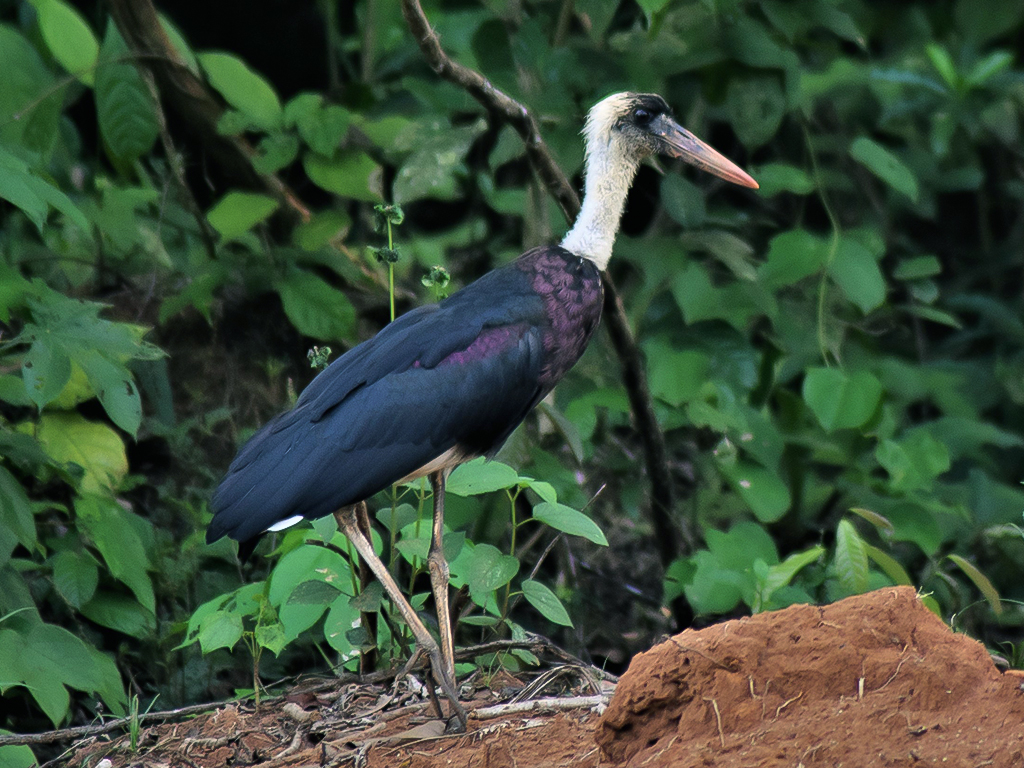
The African Woollyneck (Ciconia microscelis) is a large wading bird belonging to the stork family Ciconiidae. It has a wide range of habitats, including marshes in forests, agricultural fields and freshwater wetlands across Africa.
This species usually breeds singly or in small groups, building nests on trees or tall shrubs near water sources.
The adult woolly-necked stork is mainly black with white feathers around its neck giving it an impressive ‘woolly’ appearance; Its wings are also tipped with white patches when seen from below during flight.
The diet of this species consists largely of fish caught by foraging through shallow waters but may include frogs and invertebrates too.
As well as being able to stand up very straight thanks to their long legs, these birds have powerful bills which they use for fishing and self defence if threatened by predators such as eagles or foxes.
Scientific classification:
| Kingdom | Animalia |
| Phylum | Chordata |
| Class | Aves |
| Order | Ciconiiformes |
| Family | Ciconiidae |
| Genus | Ciconia |
| Species | C. episcopus |